EvgeniyShkolenko/iStock via Getty Images
Thesis
The geopolitical situation in the world requires more rapid development from the defense complex of the United States and Europe. I assume that the West will spend more on defense than in recent years – in this regard, SPDR S&P Aerospace & Defense ETF (XAR) is a good choice for gaining exposure in this sector.
Why do I think so?
Since the beginning of February, the situation between Russia and Ukraine has been worrying. Both countries, although having relatively small shares in the framework of the global economy, are nevertheless important suppliers of raw materials such as grain, wheat, fertilizers, oil & gas, precious metals (PGM), etc. That’s why recently the prices of metals like aluminum, zinc, and copper, as well as agricultural products, are skyrocketing globally – look at the wheat chart from March 3, 2022 (+52% this week):
The Daily Shot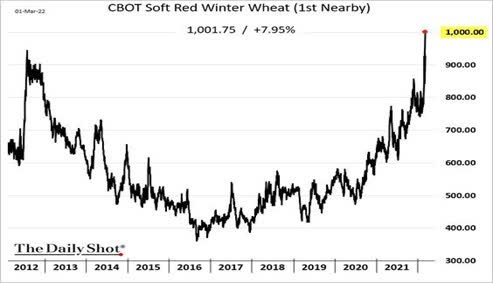
However, the cause of the resulting imbalance is still not resolved – the war in Ukraine continues.
The main page on Bloomberg, March 5
The speed with which events are unfolding suggests the thought – how exactly will the West help protect Ukraine, at the expense of what?
In recent months, we have seen the United States systematically reduce defense spending, largely because a Democrat has taken the helm – there is a very clear connection:
Morgan Stanley Research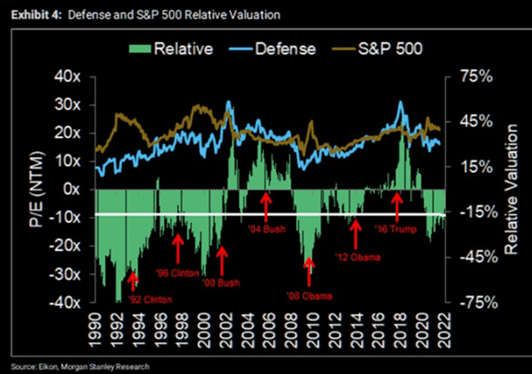
Here is what we see: when a Democrat (Clinton, Obama) takes the helm, the relative valuation of defense companies begins to fall sharply – the same is true for absolute P/E values, which grow when the main market “warms up” but does so with a lag. When a Republican (Bush Jr., Trump) is at the helm in the U.S., defense spending rises sharply and so does the valuation of defense sector companies.
Now the comparative valuation of the defense industry is still at a low level – it is obvious that there is room for growth when the defense spending budget increases.
Until the last day of peace (February 24), I thought that Putin would not dare to take the step of unleashing a war with a neighboring state, despite all the warnings from Western military and intelligence agencies. Now the situation is developing very quickly – the Russian army has captured the Zaporizhzhia nuclear power plant (ZNPP) with an armed attack:
At the moment, the ZNPP is under the control of the Russian army and does pose a radioactive threat to Europe (although radiation levels were normal at the last report). However, such a move by Putin will once again bring home to Biden the need to increase the defense budget – ordinary Americans are concerned about Russian aggression and will therefore look favorably on such a move by their president.
BCA Research, March 4, 2022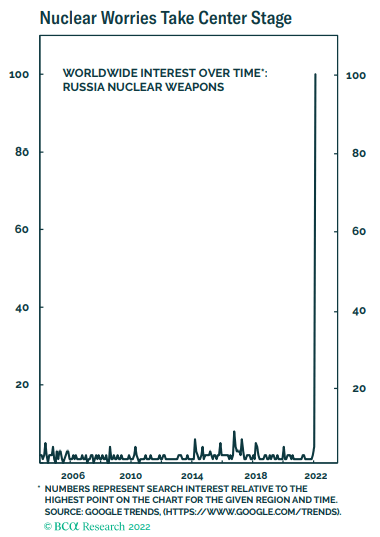
The return of ordinary Americans’ approval is like breathing room for the U.S. president, as his rating has fallen in proportion to inflation since mid-2021:
ABC News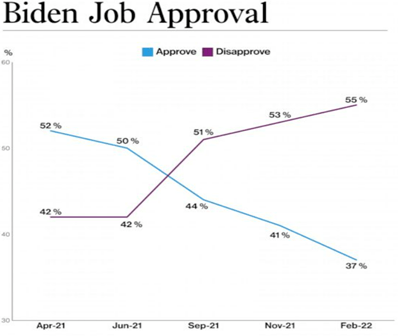
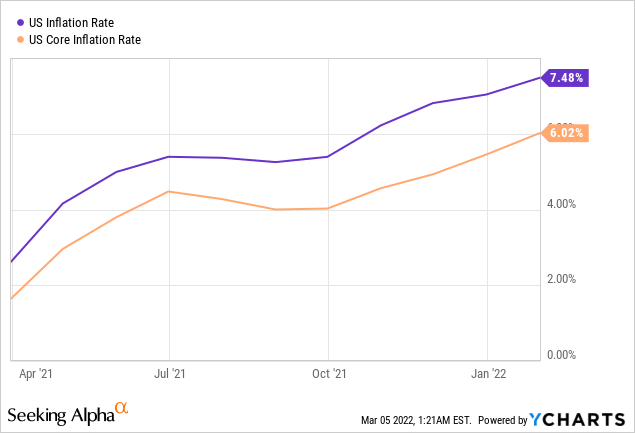
To win back voter support, I believe Biden must either a) overcome inflation or b) shift Democratic policies toward Republican, primarily by increasing the defense budget. No one has been able to deal with point “a” for many months – supply disruptions and chip shortage are doing the rest. And for point “b,” the war in Eastern Europe is the key catalyst, in my view.
To date, Biden’s approval rating is at 41.6%, according to FiveThirtyEight – it was 42.4% the day before the war in Ukraine began, on February 23. This means that Biden’s rhetoric on helping Ukraine has not yet reached the hearts of ordinary Americans – perhaps this will push the president’s political strategists to find more ambitious ways to help Ukraine and all of Europe.
The same logic appears to be followed by institutional investors, who have significantly increased their positions in defense ETFs over the past month:
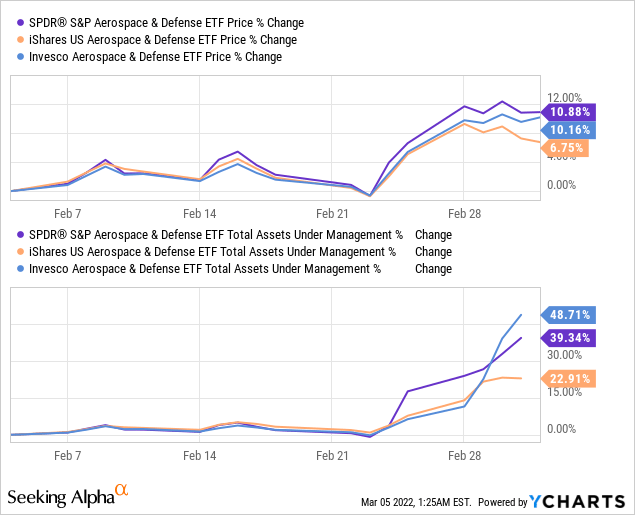
I believe that given the current market volatility, one should be cautious about investing in individual names of this sector – there is a high risk of
- Losing more than if we buy all companies in the sector (aka idiosyncratic risk) and
- Earning less than other companies (opportunity cost).
Therefore, the choice of an ETF is logical in this situation. We have 3 fairly liquid instruments:
|
ETF name |
AUM |
Average Daily Volume |
Expense Ratio |
|
XAR |
$1.46B |
$15.78M |
0.35% |
|
$3.06B |
$38.50M |
0.42% |
|
|
$776.28 |
$7.30M |
0.61% |
Source: Author’s selection based on ETF.com
In my opinion, XAR is a very good choice because the weighting of its components is not too broad (32 stocks) and is mainly distributed among high-quality companies that are leaders in the sector. That said, if the sector continues to grow rapidly (which we have seen in recent days), then Northrop Grumman (NOC), Lockheed Martin (LMT), and Mercury Systems (MRCY) are pretty good bets as individual names – they are reliable and will be the first to get orders if the budget expands. They make up the bulk of this ETF’s portfolio:
Also, as you may have noticed above, XAR has the smallest expense ratio – as long as you keep this fund in your portfolio, commissions will not be a headache (with ITA and PPA, commissions are also small, but it’s always better to save on them if the way they are managed does not differ significantly).
XAR is currently trading at quite a deep discount, so I recommend investors include this ETF in their medium-term portfolio.
Where I may be wrong?
First, according to economic theory, an increase in defense spending implies an incentive, not a disincentive. That is, if costs rise, inflation will follow them – that is, prices will rise, and because of high commodity prices all over the world, the development of the economy becomes questionable – all of which may eventually lead to stagflation. So if spending goes up, it will most likely not be very strong to offset the inflation burden.
Second, I may be wrong in my choice of ETFs – the other two, PPA and ITA, may grow more than XAR, contrary to my thesis. However, in reality, these 3 ETFs follow each other and the choice will not have a strong effect – it is just that in my opinion, the chance of abnormal return by XAR is higher than by the other 2.
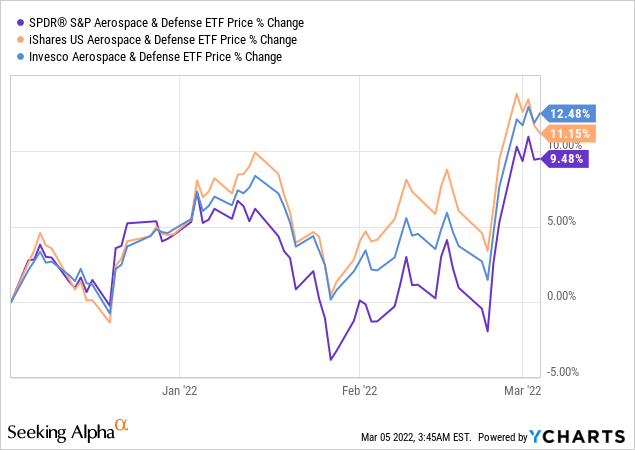
Bottom Line
I believe that the current macroeconomic environment should cause Western countries to consider expanding their military budgets. According to Crescat Capital LLC, defense spending in the U.S. has been declining since at least 1962 (as I said above, there have been upticks during that time, but the long-term trend is clearly down). Now that Putin is seen as the greatest threat to political and social stability not only in Europe but around the world, the U.S. is unlikely to stand idly by. Biden is likely to go against the Democrats’ classic commitment to cut military spending, and we will see an increase in defense revenues across the board.
In any case, according to the latest news from Germany, we see that the trend toward guns has already begun and is unlikely to end shortly:
The U.S. will be in an advantageous position because of its expertise in defense matters. Therefore, exposure to this sector is a must at this time, in my view. This is best done through ETFs, of which XAR seems to be one of the most attractive at the current price level.
Happy investing and stay safe!



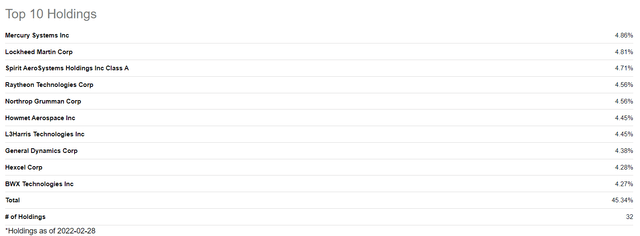
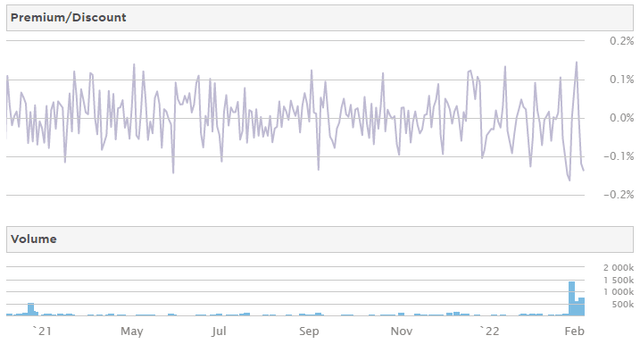
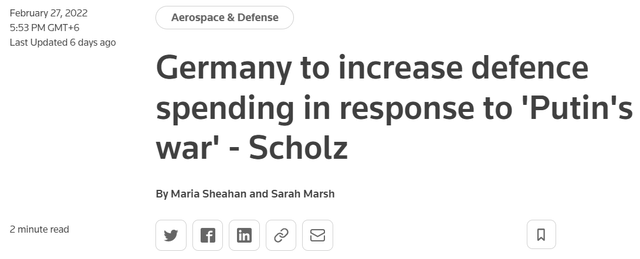
Be the first to comment